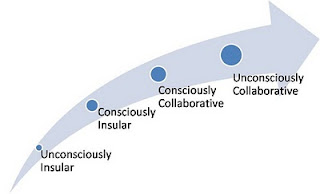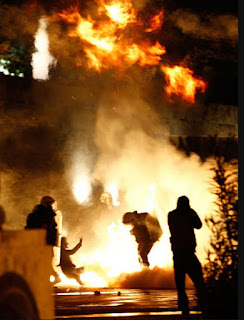From Entropy to Excellence

Tremendous organizational energy can be released if the CLO can identify, train and galvanize key influencers to lead the transformation toward operational excellence.
Front-line workers - those who are closest to the products or services the company delivers - have historically been undervalued and ignored in the major activities and decisions of many organizations. However, these workers are the ones who best sense and respond to the magnitude of change in today's market. Being closest to the action, they are constantly accumulating market experience and knowledge and are the first filter for trends.
Ideally, these workplace "heroes" are free to focus solely on leading and driving change. However, more often than not, they are tackling these initiatives on their own time. Directly or indirectly, they implement new processes, train employees on new procedures and act as role models to demonstrate new and better ways to work. It is the heroes who are the key to successful strategy execution.
However, these front-line workers also can be the single biggest roadblock to major change. Often, they are the last to know about change initiatives and are given little information on the basis for the changes. The CLO can play a significant role in developing pathways to accelerate this two-way flow of information. After all, when these key employees see the strategies and decisions that result from their own input, they are substantially more engaged in making them successful.
To fully leverage the company's collective knowledge base, organizations must develop processes to systematically capture and channel field-level knowledge into decision making and implementation. Luckily, it does not require substantial capital investment to begin. Companies can simply pick a single process and build a prototype within that process. If success is demonstrated, other areas of the organization will quickly adopt the methodology - especially if it is clear to those employees that the ideas of their peers were recognized and implemented.
Ultimately, as organizations institutionalize this approach, new technologies will provide the relevant data for decision making, as well as provide a forum for front-line employees to share their insights and for senior leadership to collect and analyze them. While in-person visits and face-to-face dialogues are still vitally important, the presence of cheap, ubiquitous data-sharing technology, such as blogs, RSS feeds, wikis and social sites, allows learning leaders to build ongoing processes to capture detailed information.
Everyday Heroes
Employees are the conduit by which a company can systematically channel fragmented market knowledge into a decision-making process that results in better decisions and a work culture receptive to execution. Hero-generated ideas are a powerful engine that can help organizations achieve superior performance and generate sustainable competitive advantage. Companies that learn to maximize the collective intelligence of their employee bases stand to gain substantial advantage, protecting and exploiting their relevance in today's rapidly changing market.
The fact is, because they are the ones doing the day-to-day work, front-line heroes see a great many problems and opportunities that their managers don't. Data from companies with high-performing idea systems show that roughly 80 percent of overall performance improvement comes from heroes throughout the organization - while only 20 percent comes from management-initiate d projects. It is amazing that most organizations largely ignore the enormous resource of employee ideas. Either their managers don't realize the power in employee ideas, or they have never learned how to tap this power effectively.
Yet organizations that do not leverage the knowledge and passion of their heroes often find themselves incapable of effecting significant change. Consider, for example, a large U.S. insurance company that created a team to lead an enterprisewide finance transformation. The group reported directly to senior management and was staffed with cross-functional experts from various lines of business. However, senior executives failed to recognize and combat the tenacity of the company's silo mentality. The product-line CFOs, who held the real organizational power, resisted what they saw as threats by the staff functions, leaving management with no choice but to abandon the implementation. It had been estimated that the transformation would have saved the company more than $15 million annually and would have significantly improved the quality of decision making across the enterprise. In the end, the heroes were not able to establish themselves as a credible force in an organization that valued experience and conventional wisdom over change, passion and innovation.
Spot the Supermen
Before learning organizations can leverage valuable front-line employees to their fullest extent, they first must identify and coach them. The process, however, must be quick: Heroes have no tolerance for bureaucracy and wasted effort. The following steps should be taken within 30 days to achieve dramatic operational improvements:
1. Apply an operational diagnostic.
Change efforts are not working if the organization is always thinking about change; always planning to change; always meeting about change; always making Power Points documenting the change process; or rarely implementing.
2. Look for heroes out in the field and as far away from headquarters as possible.
Heroes generally spend most of their time with the customers.
3. Seek out the most eager change leaders.
Keep in mind that these workers may not be those who are formally recognized by the company, but rather are sought out by peers for answers. These are the employees who know which documented procedures don't work.
4. Form a team of heroes.
Put them on a public project with an ambitious mandate to provide the organization with a tangible, visible, measurable proof of concept.
5. Provide the team with a hands-on learning experience.
An immersive learning event will enable the group to gain experience, see results firsthand and develop the confidence and passion for change.
6. Develop and implement a pilot.
Immediately following the hands-on experience, coach the hero team to develop a solution - within 30 days - that can be viewed and evaluated by all.
7. Gain executive buy-in.
After the organization has embraced the pilot, encourage management to provide huge positive reinforcement.
8. Keep the momentum going.
Learning leaders should help the organization roll out the pilot and quickly begin work on another high-priority initiative. Don't let bureaucracy kill momentum with endless reviews, unnecessary meetings and ongoing debates.
9. Record and communicate success.
Work with senior management to document and spread success throughout the organization. If it is not accurately chronicled and thoroughly communicated, it will never become part of the company's learning library.
A Case Study on Change
The fastest-growing city in Canada, Barrie is located on Lake Simcoe on northeastern Ontario. The city's mayor, Dave Aspden, most recently ran on a platform of change and completely replaced the executive leadership team. The city sought to not only improve the overall efficiency and effectiveness of the municipality' s services, but also to transform the culture of an organization in which the average employee tenure was nearly 20 years.
"We're building capacity to manage process improvement projects," said Jon Babulic, the city's chief administrative officer. "That's not outsourcing - we're insourcing work that will either not get done at all or will only get done by outside consultants at a much higher cost. When given the tools to improve the work processes they use, staff will exceed expectations and resident satisfaction will increase."
Barrie had spent three years working with myriad external experts to help with its transformation - without any real success. In each case, the story was essentially the same: The strong organizational culture deeply rooted in preserving the status quo repeatedly resisted and ultimately defeated all management-led change efforts. As a municipality, the workers enjoyed essentially lifetime employment and, as a result, never felt particularly compelled to embrace change.
Finally, the city took a different approach. Working with The Klapper Institute, it put the executive leadership team and the 15 heroes who were historically viewed as the leaders of the resistance through a two-day transformational program. The program was intended to demonstrate to them firsthand how their behaviors and actions contributed to the organization' s performance.
The group took control of an operating company that began as a legacy-based organization dominated by entrenched silos, "firefighting" and suboptimal financial performance. Over the next two days, the team performed root-cause analysis, built enlightened experiments, developed rapid pilots and implemented their results. By the end of the event, they had completely transformed the company, had optimized organizational performance and, most importantly, had become excited about tackling these targeted issues in their municipality.
Immediately following the workshop, Barrie created two teams and gave them a 30-day time limit to achieve difficult change initiatives. Within 21 days, both teams had coupled customer insights with their deep and latent knowledge of "how to really get things done" and translated them into experiments and pilots that far exceeded their mandates. In fact, one of the teams developed a working pilot that is estimated to save the city $78 million over the next 20 years. Implementation on both initiatives is currently under way, and the level of passion for the change is unprecedented.
Winning in today's market requires leveraging this untapped wealth of market-sensing capability and engaging these resources in implementation. By enlisting internal heroes, companies will attain nimble, flexible operations and remain relevant into the next decade and beyond.
[About the Author: Brian Klapper is the President of The Klapper Institute. The Klapper Institute (KI) is a management consulting firm whose mission is to teach clients to make decisive improvements in business performance by embedding a problem-solving discipline throughout their organization. ]



Comments
Post a Comment